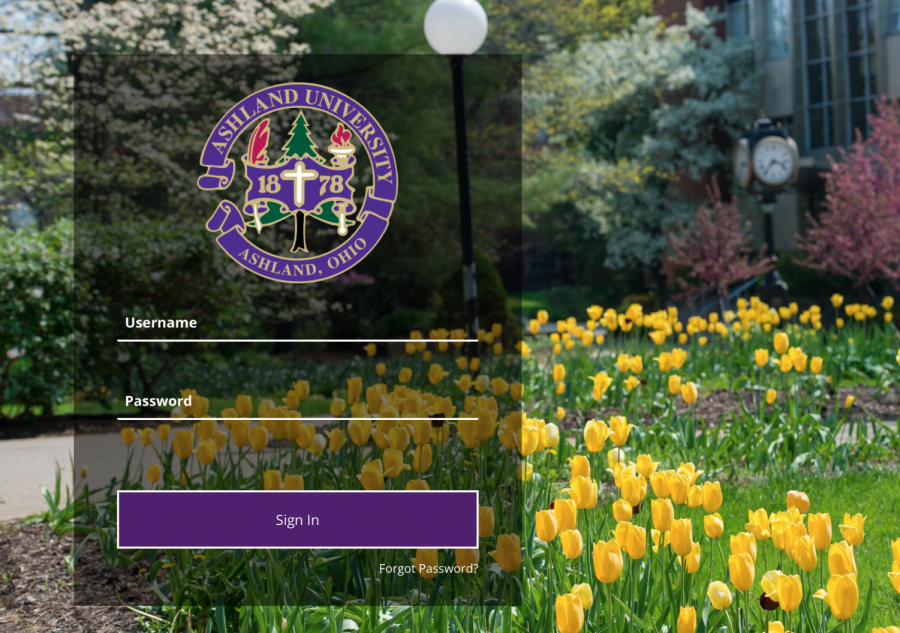The switch to online learning
April 2, 2020
The coronavirus has changed many things for people all over the world. Specifically college students have had to adjust to a new way of learning, as well as professors with a new way of teaching.
Ashland University’s decision to move from face-to-face learning to online learning as a way to prevent the spread of the virus was announced on March 16.
Shawn Orr, communication studies professor and director of the Center for Innovation and Teaching Excellence (CITE), believes that AU had an advantage over many other institutions in the wake of this switch.
“All courses at AU already had a course shell in Blackboard,” she said. “We’ve provided robust training and development, both live and recorded, over the last three years on both Blackboard and online learning.”
Nonetheless, there were some faculty members who may not have been as comfortable with a digital format. This is where CITE comes in.
“CITE cultivates the growth and learning of faculty, advancing their development as teacher-scholars by providing and coordinating support, resources, and collaborative programs,” Orr said. “By offering opportunities for faculty development, the Center sustains extraordinary learning experiences for students.”
After the announcement to move online for the rest of the spring semester, CITE and the Instructional Technology team worked together to ensure that adequate training and support was available to faculty.
“More than 50 resources were created, uploaded and archived in the CITE Blackboard organization,” she said. “In the first ten days, there were 660 faculty logins to that site and 1900 pieces of content was accessed.”
In-person training, webinars, office hours and individual one-on-one sessions were developed as a way to provide the necessary knowledge for successful online teaching.
“The goal for faculty in this time of disruption is to use virtual and digital tools in both synchronous and asynchronous formats to ensure our students continue to learn and master the learning objectives in their courses,” Orr said.
Face-to-face digital tools such as Zoom and Blackboard Collaborate can be blended with Kaltura recorded videos and discussion boards to enhance a student’s learning, she said.
Orr admits that many professors have been worried about meeting the needs of students.
“Faculty want to ensure students continue to learn in authentic and meaningful ways, master the course content, and use technology to enhance this process,” she said. “But at the heart of many faculty concerns is that students are provided with the emotional and academic support they need as members of the AU community.”
Orr, herself, is teaching two courses this semester and understands the struggle of creating online curriculum.
“I’m focusing on maintaining realistic expectations for student projects and assessments, focusing on the big picture of the course and key learning outcomes and finding strategies to continue to engage in authentic and meaningful ways with my students,” she said.
Academically, her students seem to be doing well but Orr is also placing an emphasis on everyone’s emotional well-being.
“It’s important to remember that while we are being good global citizens and doing our part of helping stop the spread of this pandemic, that doesn’t negate the real feelings of sadness and disappointment many students are feeling at the sudden end to their physical academic year at AU,” she said.
Junior public relations/strategic communications major, Riley Troxell, recognizes the help and support she has received from professors. Nonetheless, she strongly prefers face-to-face learning.
“I am struggling to focus on my school work at home and stay on task,” she said. “I sometimes find it very hard to get out of bed since realistically I do not have to, nor do I have anything that is requiring me to do so.”
Troxell is still working to create a routine to which she can stick.
“I usually try to get up and get ready for the day and have breakfast and lunch before my classes, but most days I don’t have the motivation to do so,” she said.
Olivia Jacob, junior history major, describes the switch to online learning as “interesting to say the least.”
She has had to adjust to being in a new environment with new interruptions, like her family and dog.
“There’s a huge difference between taking classes at school and at home because at my school my brain is wired to get my work done and I had many resources right on hand,” she said. “But now, most of those resources have been cut off or moved and I have been finding it hard to feel motivated to get my work done.”
Jacob reports to online classes each day using a platform called WebEx.
“For my classes especially, we learn more from the conversations we have in class with each other as opposed to just full lecture,” she said. “Having to have these conversations from a computer screen makes them feel way less personal and it makes me not want to participate as much as I would have in class.”
Being a big procrastinator, Jacob has started to set aside specific times in the day to do school work.
“Before this, I never really had a school planner because I’m just not the type of person to have one,” she said. “Now, I’ve made a spreadsheet of all of my major assignments for the rest of the semester and marked when they are due, so I can plan ahead and figure out when I’m working on what.”
Orr’s biggest advice to students who may be struggling with online classes is to celebrate the little successes.
“While completing a first digital discussion board post may not seem like a big accomplishment to some, if it’s your first time using that technology and you figured it out, feel that accomplishment,” she said. “It’s real.”


